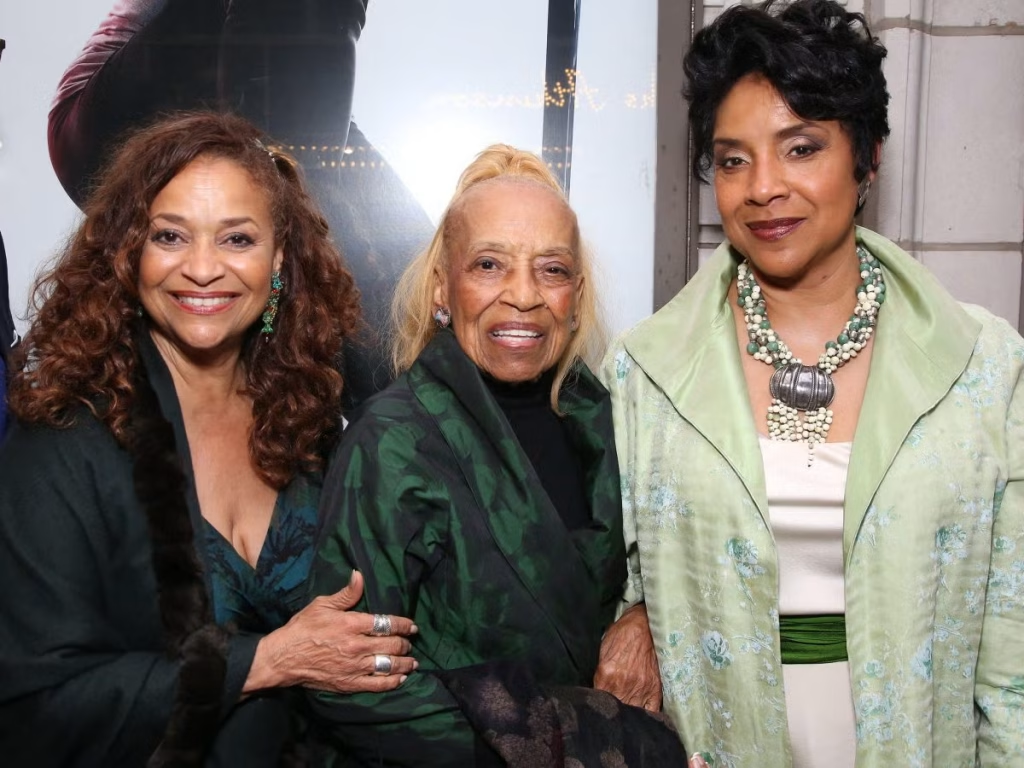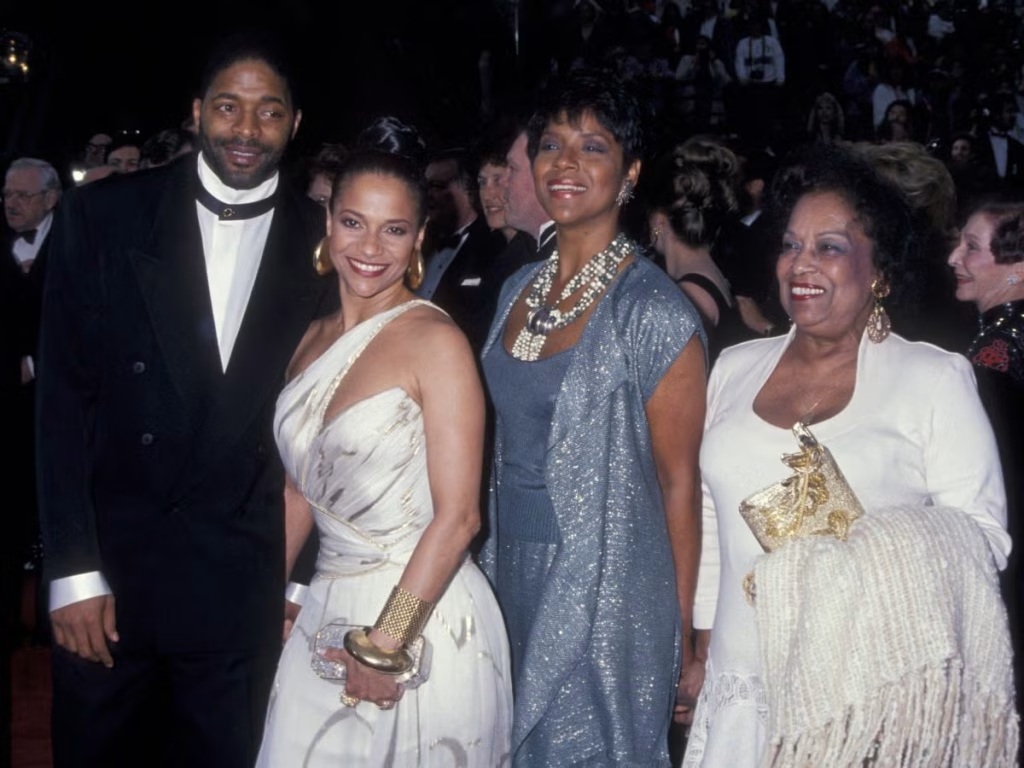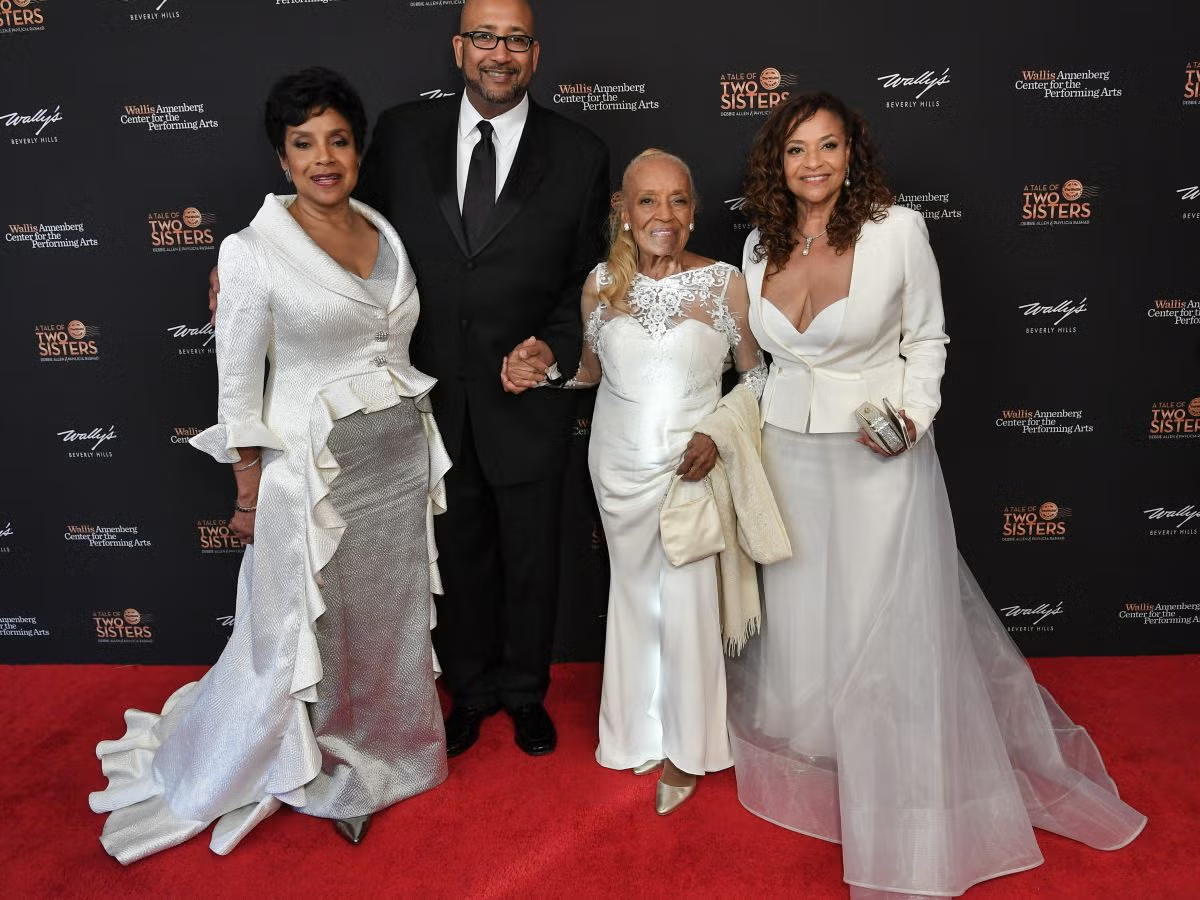On August 18, 2025, the world said goodbye to Vivian Ayers Allen, a remarkable woman who lived 102 years of creative brilliance, scholarship, and maternal love. For many, she was known as the mother of Debbie Allen and Phylicia Rashad, two iconic figures in the world of television, dance, and stage. Yet to define her simply by her children would be to miss the extraordinary story of a poet, classicist, and cultural activist whose life quietly but powerfully helped shape American arts and letters.
Vivian Ayers Allen was a Pulitzer-nominated writer, a student of ancient cultures, a museum curator, a mother of four, and a woman of deep courage who lived through some of the most difficult and transformative chapters of the 20th century. She carried the wisdom of her ancestors, blended African American and Cherokee heritage, and turned adversity into art. Those who knew her admired her discipline and gentle power. Those just learning of her story now will find inspiration in the way she lived: with an unshakable belief in creativity as a daily ritual and in education as a pathway to freedom.
Vivian Ayers was born on July 29, 1923, in Chester, South Carolina, into a family that prized education and cultural advancement. She attended the Brainerd Institute, one of the most respected schools for African Americans in the South, and graduated as valedictorian of its final class in 1939. At a time when segregation sought to limit opportunities for Black students, Vivian mastered classical subjects, excelling in Latin and French, and trained as a concert pianist. This grounding in classical and artistic education would guide her entire life and later influence the way she raised her children.
Her family lineage included Cherokee roots, giving her a multicultural identity that connected her to African American, Indigenous, and European traditions. This tapestry of heritage informed her later writings and the cultural breadth of her scholarship. She was not simply a poet who observed life but a thinker who looked for connections between history, mythology, and the human spirit.


Vivian’s gift with words was evident early on. In 1952, her poetry collection Spice of Dawns was nominated for a Pulitzer Prize, a rare honor for a Black woman writer at that time. Her poetry reflected not only a mastery of language but also an awareness of time, space, and the rhythms of human life.
Her 1957 poem Hawk became one of her most celebrated works. Enlarged and placed on display at NASA’s Lyndon B. Johnson Space Center in Houston, the poem reflects on the relationship between flight, freedom, and human exploration. That placement was not symbolic alone. It recognized her as a thinker who understood that the imagination fuels progress just as much as science. When astronauts looked toward the stars, they carried her words with them, affirming the connection between art and innovation.
One of the most remembered aspects of Vivian Ayers Allen’s life was her daily discipline as a writer. Her daughter Phylicia once shared that their mother woke up at three o’clock every morning to write. This was not a casual practice but a lifelong ritual that reflected her devotion to creativity.
Debbie Allen has often spoken of how her mother infused art into their everyday lives. Vivian taught her children choral speech, encouraged them to tumble across the living room floor, and reminded them that expression was not limited to stages or books. It was something to be lived. She gave her children a foundation not just in craft but in courage. Debbie would later call her a “true Renaissance Woman” who lit a path of love, fight, and faith.
For her children, watching their mother write each morning, even when the world did not reward her with fame, was an enduring lesson in resilience. It taught them that art matters because it is an expression of self and spirit, not because it garners applause.
Vivian’s life was not free of hardship. She and her husband, Andrew Allen, experienced the sting of segregation in Houston, where opportunities for their family were often constrained by racial discrimination. Instead of yielding to these limitations, the Allens made a bold decision. They moved their family to Mexico.
This relocation was more than a geographical shift. It was an act of liberation. In Mexico, the children were exposed to new languages, cultural traditions, and a society that did not view them solely through the lens of American racial categories. The experience deepened their adaptability and expanded their creative horizons. Vivian’s encouragement of bilingualism and cultural openness helped give her daughters the versatility that would later serve them in theater, dance, and television.
Andrew’s death in 1984 left Vivian a widow, but she continued to anchor her family with strength and dignity. She never lost sight of the importance of art, education, and faith, carrying those values into her later years.

Vivian Ayers Allen’s name often appeared in literary circles, but her influence extended further than many realized. She curated museums, studied Mesoamerican astronomy, and examined the connections between mathematics and culture. She explored how ancient civilizations understood time, aligning her own poetic philosophy with broader inquiries about the cosmos.
Her legacy also intersected with the space race. In 1969, during the Apollo 11 mission, her writings and scholarship were quietly part of the cultural dialogue about exploration and the human spirit. Today, institutions such as Bennett College and NASA recognize her as a hidden figure whose contributions to the arts and sciences expanded how we understand cultural history.
In 2023, Vivian’s family celebrated her 100th birthday. NASA honored her contributions, a rare acknowledgment for a poet and cultural scholar. Her children, grandchildren, and great-grandchildren spoke of her enduring influence. Debbie Allen wrote publicly, thanking her mother for providing a path of “light, love, fight, and faith.”
At 100, Vivian was not just a matriarch but also a cultural elder, living proof that discipline and creativity can sustain a person across more than a century. Her mind remained sharp, and her presence was a source of strength for her family.
Vivian Ayers Allen passed away peacefully at the age of 102 on August 18, 2025. Her life spanned decades of transformation, from the Jim Crow South to the first Black president, from segregated classrooms to her children commanding Broadway and Hollywood stages.
For those who knew her story, her passing is a personal loss. For those meeting her legacy for the first time, it is an invitation to look closer at the hidden figures who shape culture not from center stage but from the quiet discipline of their daily work.
Her death leaves a void, yet it also leaves a trail of light. Her poetry remains. Her teachings endure in the careers of her daughters. Her disciplined spirit lingers as a reminder that creativity is both a gift and a practice.


The impact of Vivian Ayers Allen can be seen clearly in her daughters. Debbie Allen’s choreography, direction, and tireless advocacy for the arts mirror her mother’s belief in daily discipline and fearless creativity. Phylicia Rashad’s elegance on stage and screen reflects the classical training and artistic grounding her mother instilled. Both women continue to carry forward the lessons Vivian modeled: that art is a way of life, that education is a form of liberation, and that courage is a quiet act of love.
Her influence also continues through her son, Andrew “Tex” Allen, a jazz musician, and through generations of grandchildren who describe her as the spiritual root of their family.
Vivian Ayers Allen lived 102 years with the dignity of a scholar and the tenderness of a mother. She was a poet whose words reached NASA, a cultural activist whose studies crossed continents, and a matriarch who nurtured some of the most brilliant artists of our time.
Her passing is not just the end of a long life. It is the reminder of what one life can hold: courage in the face of injustice, creativity practiced as daily devotion, and love expressed through the cultivation of art and intellect.
For those who already knew her, the grief of her absence is softened by the certainty of her legacy. For those learning her story today, may it inspire you to rise early, to create without apology, and to see art not as an extra, but as the very breath of life.
Vivian Ayers Allen is gone, but she has not vanished. Her voice remains in poetry, her influence lives in her children, and her example will continue to move generations who dare to believe that art and love can change the world.
Disclaimer: I do not own the rights to the photographs featured in this article. All images remain the property of their original copyright holders. Images sourced from social media accounts, including Debbie Allen’s official page, are shared here under the principles of fair use for informational, educational, and tribute purposes. They are presented solely to honor cultural, historical, or newsworthy moments. If any copyright holder requests removal, images will be taken down promptly. No copyright infringement is intended.
Discover more from MidScroll
Subscribe to get the latest posts sent to your email.



